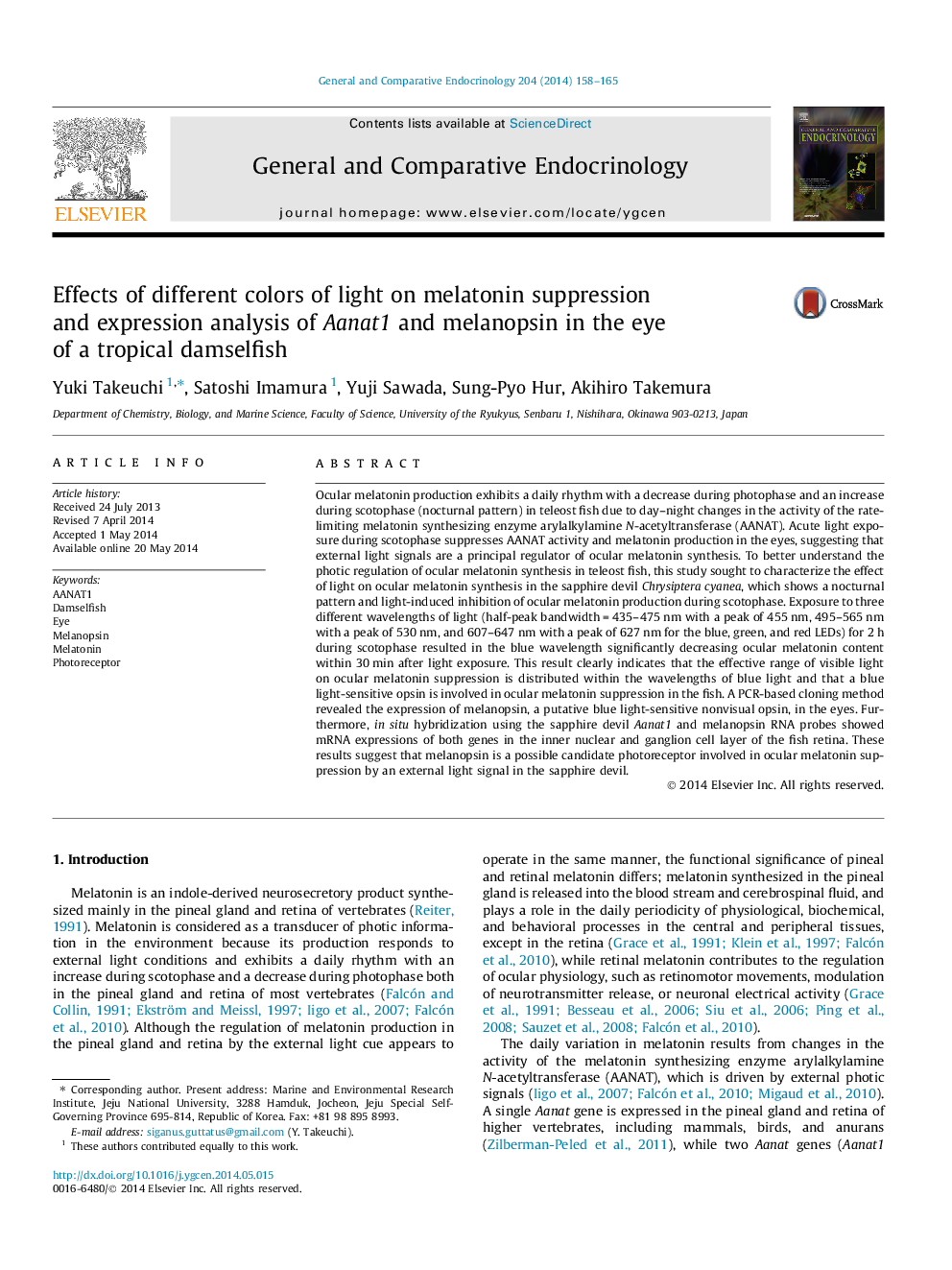| Article ID | Journal | Published Year | Pages | File Type |
|---|---|---|---|---|
| 2800186 | General and Comparative Endocrinology | 2014 | 8 Pages |
•Ocular melatonin contents in the sapphire devil exhibited daily rhythm.•Acute light exposure during nighttime suppressed ocular melatonin production.•Effective range of light-induced ocular melatonin suppression at night was blue wavelengths.•Aanat1 and melanopsin mRNAs were expressed in the inner nuclear and ganglion cell layers of the fish retina.•Possible involvement of melanopsin in the blue light-induced ocular melatonin suppression was suggested.
Ocular melatonin production exhibits a daily rhythm with a decrease during photophase and an increase during scotophase (nocturnal pattern) in teleost fish due to day–night changes in the activity of the rate-limiting melatonin synthesizing enzyme arylalkylamine N-acetyltransferase (AANAT). Acute light exposure during scotophase suppresses AANAT activity and melatonin production in the eyes, suggesting that external light signals are a principal regulator of ocular melatonin synthesis. To better understand the photic regulation of ocular melatonin synthesis in teleost fish, this study sought to characterize the effect of light on ocular melatonin synthesis in the sapphire devil Chrysiptera cyanea, which shows a nocturnal pattern and light-induced inhibition of ocular melatonin production during scotophase. Exposure to three different wavelengths of light (half-peak bandwidth = 435–475 nm with a peak of 455 nm, 495–565 nm with a peak of 530 nm, and 607–647 nm with a peak of 627 nm for the blue, green, and red LEDs) for 2 h during scotophase resulted in the blue wavelength significantly decreasing ocular melatonin content within 30 min after light exposure. This result clearly indicates that the effective range of visible light on ocular melatonin suppression is distributed within the wavelengths of blue light and that a blue light-sensitive opsin is involved in ocular melatonin suppression in the fish. A PCR-based cloning method revealed the expression of melanopsin, a putative blue light-sensitive nonvisual opsin, in the eyes. Furthermore, in situ hybridization using the sapphire devil Aanat1 and melanopsin RNA probes showed mRNA expressions of both genes in the inner nuclear and ganglion cell layer of the fish retina. These results suggest that melanopsin is a possible candidate photoreceptor involved in ocular melatonin suppression by an external light signal in the sapphire devil.
